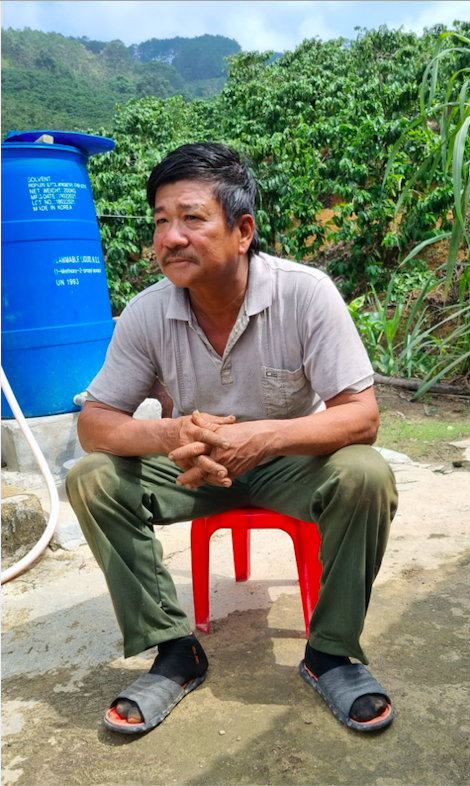Location: Lam Dong, Vietnam
Timespan: 2021-ongoing
Partners: the PAN Group, the Sustainable trade initiative IDH (Netherlands) and Di Linh District People’s Committee, Local farmers

In GOGREEN, we define the green SDGs as the following SDGs: SDG 6, SDG 7, SDG 11, SDG 12, SDG 13, SDG 14, SDG 15
The Protection, Production and Inclusion Compact (PPI Compact) in the central highlands of Di Linh situated in the Lam Dong province of Vietnam addresses some serious biosphere problems such as ground water depletion, the erosion of soil, deforestation and climate change. For many years, farmers overused water, herbicides and artificial fertilizer and encroached on the forest surrounding their coffee fields.
The PPI Compact builds on a new landscape approach that focusses on enhancing sustainability in a large territory and it is informed by the SourceUp approach of the IDH, which aims to foster collaboration between all the actors in the commodity value chain, from farmers, via middlemen and big buyers, to global exporters. The project is enabled by the growing demand for responsibly produced coffee and new EU standards for sustainability coffee. Vietnam is the second largest coffee exporter in the world, and the growing demand and new regulations forces the Vietnamese government to act.
The PPI Compact involves relevant and affected public and private actors such as farmers, village heads, the women’s and farmers’ associations, consultancy firms, the Peoples Committees at the communal and district level, middlemen, big buyers and coffee roasters. The actors were originally convened by IDH, which is a global NGO for sustainability financed by international development agencies.
The actors collaborate to assess problems, design and test new solutions and train farmers in new farming practices. The goal is to enhance the sustainability of coffee production and the livelihood of the farmers. This goal is achieved by means of certification that gives the farmers a premium in terms of a higher price for their coffee if they stop using chemicals, improve soil quality by using organic fertilizers, build ponds to enhance the use of surface water, and introduce cover crops and intercropping to create shade and store CO2 in the soil.
This inspiring co-creation project started as a pilot project and is now in the midst of scaling up. Since it is expanding in Vietnam, you might ask yourself: how can co-creation and collaborative governance flourish in a one-party state that is governed top down by a bureaucratic state apparatus? Our surprise finding is that the Vietnamese government is increasingly embracing a Public Private Partnership (PPP) approach to public governance. It started with new legislation in 1993 and 1997 that allowed the formation of PPPs in big infrastructure projects. Since then, the PPP approach has been generalized to more and more sectors, including agriculture. Today, the government recognizes that complex problems are best solved through the mobilization of the ideas, competences and resources of manifold actors. As a result, green sustainability projects with bottom-up participation of farmers and local NGOs are mushrooming.
Our GOGREEN case study of the PPI Compact exceeds all expectations. As such, we are amazed by:
Finally, yet importantly, it is interesting to see how the demands for sustainability, the local and global conditions and the partnership dynamics constantly shift and create a rather turbulent environment that must be responded to through a combination of adaptation and innovation, thus prompting what we might term ‘robust sustainability governance’.
For example, there is now a growing focus on reducing CO2 emissions in coffee farming and storing carbon in the soil. This requires adaptation of the sustainable farming practices and innovative interventions such as the planting of cover crops. Exciting to see how this will unfold in the future.
This website uses strictly-necessary cookies. To read more about WordPress cookies, click here. Please click on the ‘Accept’ button to continue on to the GOGREEN Project site.